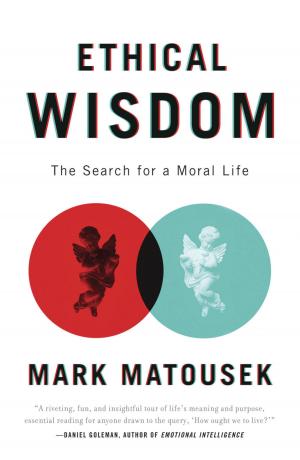The Affirmative Action Puzzle
A Living History from Reconstruction to Today
Nonfiction, Reference & Language, Law, Discrimination, Social & Cultural Studies, Political Science, Politics, Civil Rights, History, Americas, United States, 20th Century| Author: | Melvin I. Urofsky | ISBN: | 9781101870884 |
| Publisher: | Knopf Doubleday Publishing Group | Publication: | January 28, 2020 |
| Imprint: | Pantheon | Language: | English |
| Author: | Melvin I. Urofsky |
| ISBN: | 9781101870884 |
| Publisher: | Knopf Doubleday Publishing Group |
| Publication: | January 28, 2020 |
| Imprint: | Pantheon |
| Language: | English |
A multifaceted history of affirmative action from its inception through the past five decades.
From acclaimed legal historian, author of a biography of Louis Brandeis ("Remarkable"--Anthony Lewis, NYROB; "Definitive"--Jeffrey Rosen, The New Republic) and Dissent in the Supreme Court ("Riveting"--Dahlia Lithwick, NYTBR), a history of affirmative action, from its beginning in 1961 with John F. Kennedy's Executive Order 10925, creating the President's Committee on Equal Employment Opportunity, and mandating federal contractors to take "affirmative action" to ensure that there be no discrimination by "race, creed, color, or national origin."
In this important and ambitious book, Urofsky writes about the affirmative action cases decided by the Supreme Court, cases that upheld as well as struck down particular plans, and those cases that affected both governmental and private entities.
He writes in detail about the societal impact of affirmative action--how it has divided society, separating not only those for and against, but also splitting traditional allies.
Urofsky's book explores affirmative action in relation to education, how nearly every public university in the country has at one time or another instituted some form of affirmative action plan, some successful, others not; and looks at whether affirmative action programs have benefited minorities. Urofsky's book looks at whether shifts over time can be discerned and if those changes can be attributed to affirmative action programs. The book explores as well the issue with regards to race and women, and if the question of economic and social advancement is different for each.
More than ever before, affirmative action remains an important and divisive issue in American society, a divide as large and perhaps less bridgeable than abortion; a public policy question still (alas) very much alive.
A multifaceted history of affirmative action from its inception through the past five decades.
From acclaimed legal historian, author of a biography of Louis Brandeis ("Remarkable"--Anthony Lewis, NYROB; "Definitive"--Jeffrey Rosen, The New Republic) and Dissent in the Supreme Court ("Riveting"--Dahlia Lithwick, NYTBR), a history of affirmative action, from its beginning in 1961 with John F. Kennedy's Executive Order 10925, creating the President's Committee on Equal Employment Opportunity, and mandating federal contractors to take "affirmative action" to ensure that there be no discrimination by "race, creed, color, or national origin."
In this important and ambitious book, Urofsky writes about the affirmative action cases decided by the Supreme Court, cases that upheld as well as struck down particular plans, and those cases that affected both governmental and private entities.
He writes in detail about the societal impact of affirmative action--how it has divided society, separating not only those for and against, but also splitting traditional allies.
Urofsky's book explores affirmative action in relation to education, how nearly every public university in the country has at one time or another instituted some form of affirmative action plan, some successful, others not; and looks at whether affirmative action programs have benefited minorities. Urofsky's book looks at whether shifts over time can be discerned and if those changes can be attributed to affirmative action programs. The book explores as well the issue with regards to race and women, and if the question of economic and social advancement is different for each.
More than ever before, affirmative action remains an important and divisive issue in American society, a divide as large and perhaps less bridgeable than abortion; a public policy question still (alas) very much alive.















